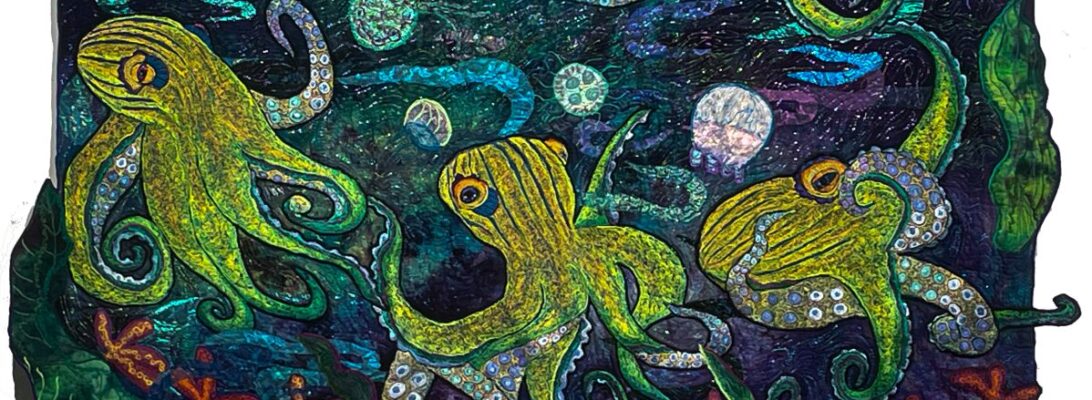
Last week’s octopi are growing. And the stitch to use for anything as lumpy and bumpy as an octopus is the garnet stitch. The fun thing is how many variations there are.
Reviewing Garnet Stitch
Garnet stitch is not a stitch on your machine. It’s working free-motion and moving your hands in circles. You can make all kinds of circles or half circles to different affect. It works either straight stitch or zigzag. It sounds simple.
It’s defined by how fast you move your hands, how large your circles are, and whether you let them overlap or not. The range of effects you can get is stunning. Visually it stands out like nothing else.
zoning

The first thing you do with a project such as this is zone it. Usually, I zone for color. With this project, I’ve zoned for texture as well. For working purposes, I marked the tentacles dark and light, since that was a major concern. Light tentacles are sucker side up. The suckers are different from the main surface, which is different from the eyes, and also different from the skin between the suckers and the main surface. The colors slide through a range between a bottle green and bright yellow, with blue and purple streaks. Nothing subtle here. But zoning my drawing helps me to know where my colors and textures need to be.

The suckers are a bull’s eye garnet stitch: dense stitching in a complete circle with no overlap, There’s a small rim garnet stitch in purple to punch out the suckers.

The general skin is an overlapping loose zigzag with layers of color on it. I’ve topped it off with a seed stitch to make it truly lumpy.

There’s a ridge over the edge where the suckers meet the main skin. I put a red violet edge of garnet stitch overlapping on one side to build the ruffle on.
The suckers seen from the side and the ruffle are pure zigzag stitching.

Finally, I stitched a large seed stitch across the skin to get that lumpy bumpy look.
Octopi are made for garnet stitch! Next week, jellyfish.














































































